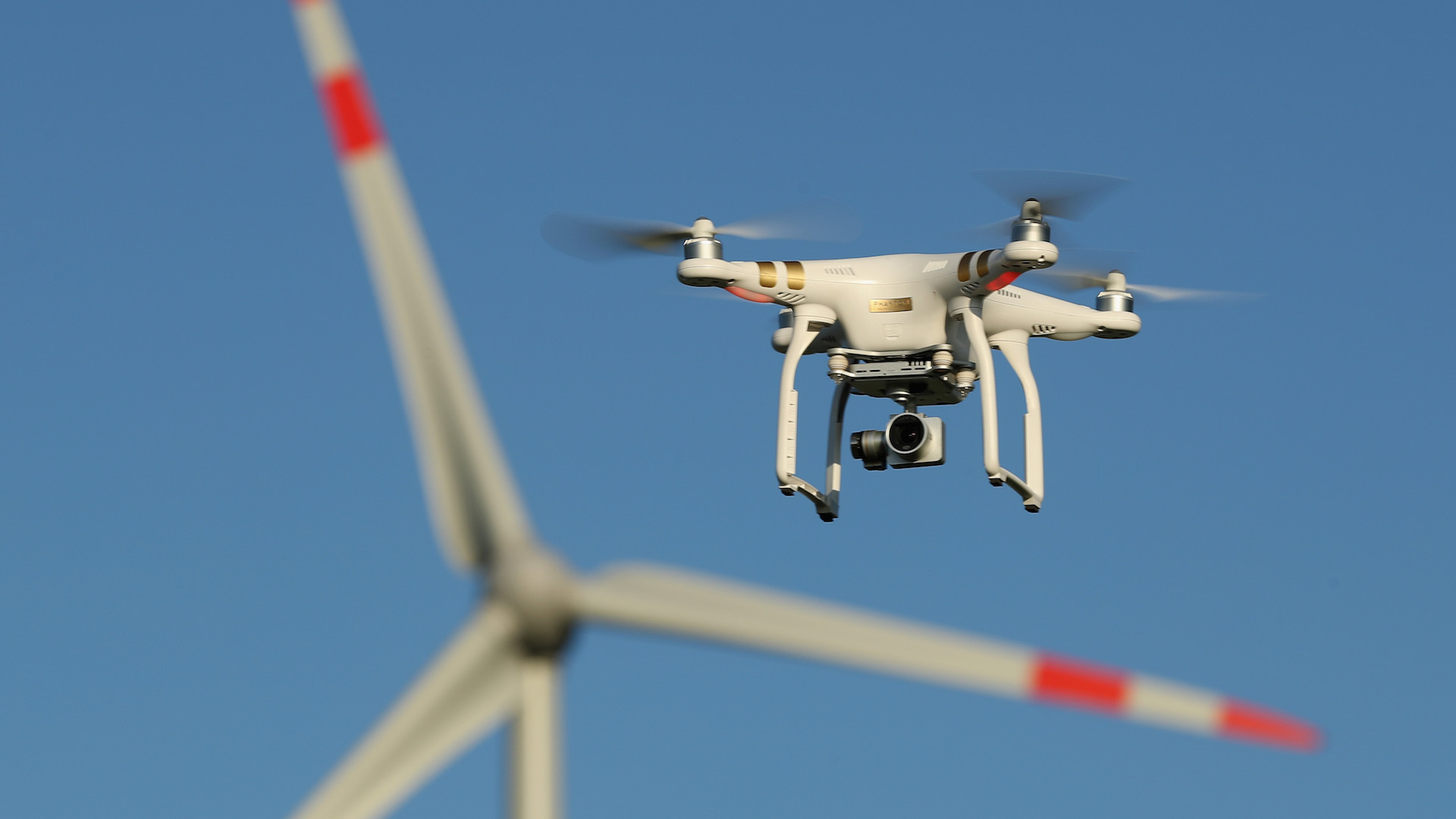

We may earn revenue from the products available on this page and participate in affiliate programs. Learn more ›
“We Don’t Make Drones. We Make Drones Work,” according to drone company Measure’s website. You’d be forgiven if your takeaway here is that while the company doesn’t manufacture drones, but they do repair them. Measure’s services, however, are rooted in a far more sophisticated, business-oriented area.
Like most other non-manufacturing drone companies, Measure aims to use drone-based systems to maximize business efficiency and cut down on unnecessary spending and downtime. And since it’s supposedly the biggest U.S. supplier of drone services to enterprise customers, Measure is pretty good at making businesses such as wind farms run at peak potential.
On Tuesday, the company announced that it will expand its methods of aerial data accumulation, allowing their drone-based wind farm inspection operations to be commandeered by outsourced drone pilots and analysts. The goal is to identify defects in blades or turbines more rapidly, accurately, and securely. Naturally, if a problem can be detected faster, it can also be resolved faster.
According to the company, its drone products have been used effectively at more than 400 MW of wind farms for inspection, reporting, and analysis. Measure uses sophisticated UAVs, which are piloted by experienced operators, and all flights are insured.
Measure’s services are not as basic as noticing a broken blade, by the way. It will measure the severity of the damage and file damage reports that can be analyzed as soon as the UAV uploads the data.
Measure claims that its services are faster than both traditional, manned inspections, as well as those from other drone-based companies, by as much as 75%.
There are fewer injuries, since there are no people on the ground. The detection of defects and damages is more advanced, due to a drone’s ability to near a turbine more closely than a camera on the ground can.
“Undetected defects on the blades can result in continuous efficiency losses as high as 6 percent and associated revenue loss of up to $10,000 annually per turbine,” according to Measure. If you’re in charge of cutting costs and increasing revenue, this seems like the logical way to go.
As Adam Brown, US Drone Program Lead at The AES Corporation says, “Using drones to inspect the blades and towers makes it safer for our people as they can stay firmly on the ground while still being able to inspect, at scale, hundreds of wind turbines to ensure they have the highest availability.”
Drones are being used in areas like agriculture, oil and gas, wind, inspection, and security more and more as time goes on. Businesses are naturally looking for ways to cut costs and increase revenue each and every quarter. Drones are simply a natural extension of whatever came before, and seem to be saving people a lot of money.
